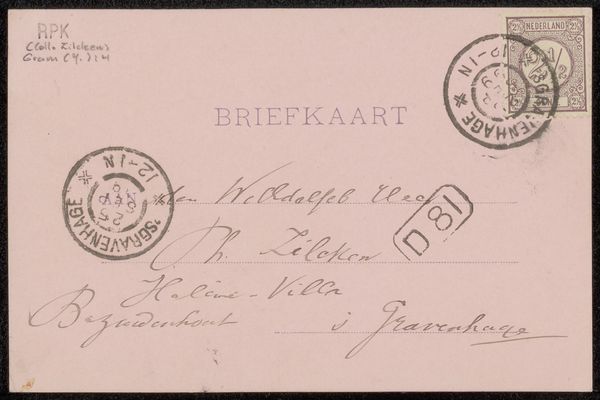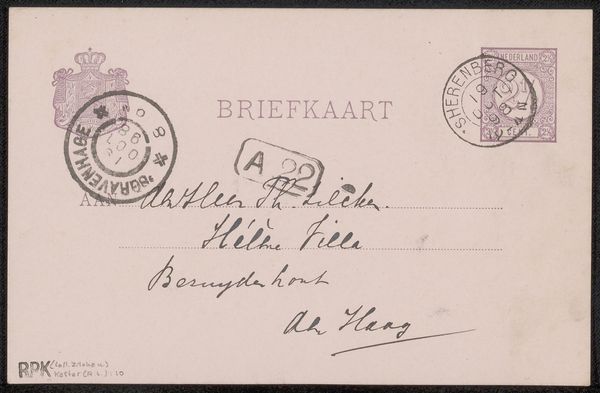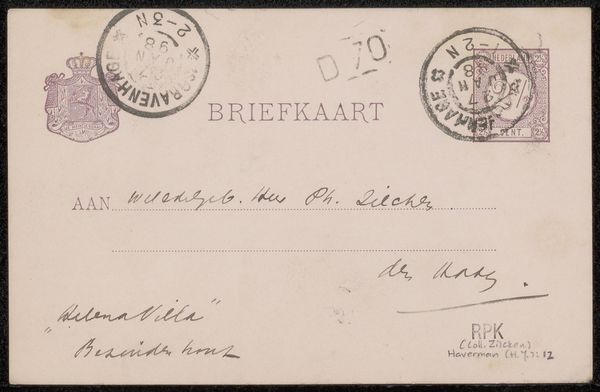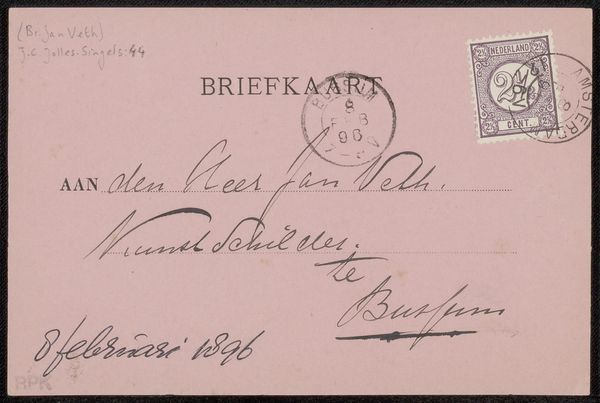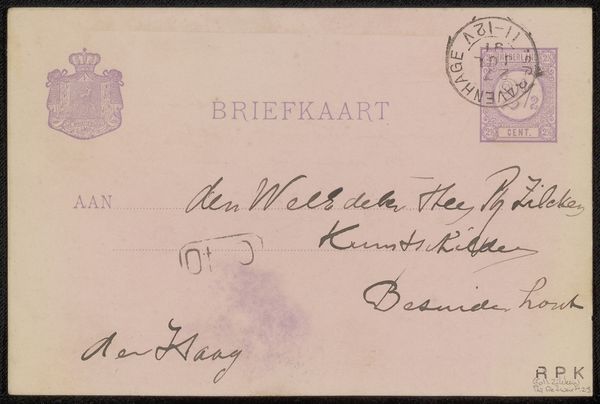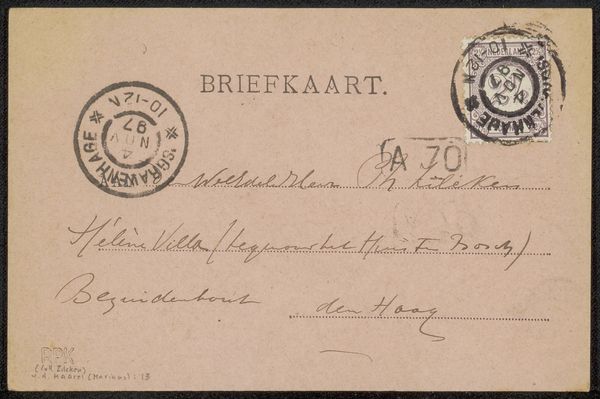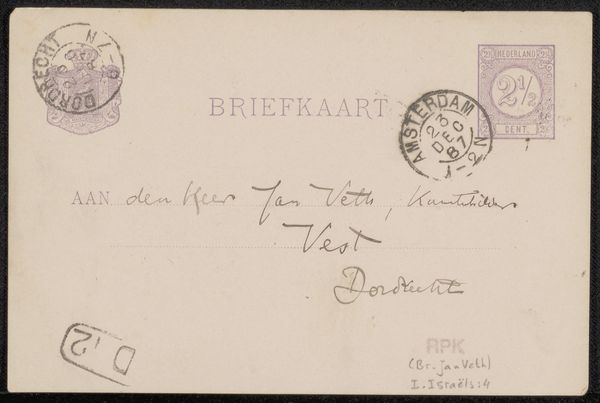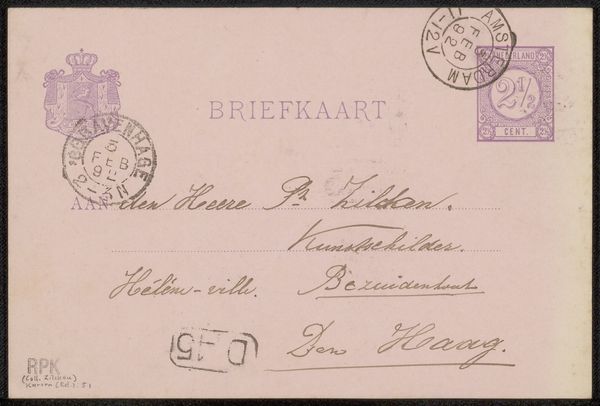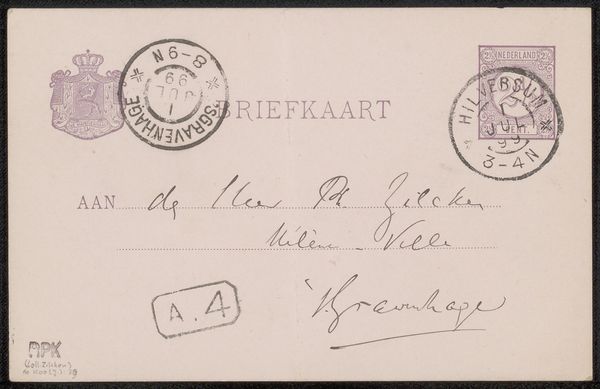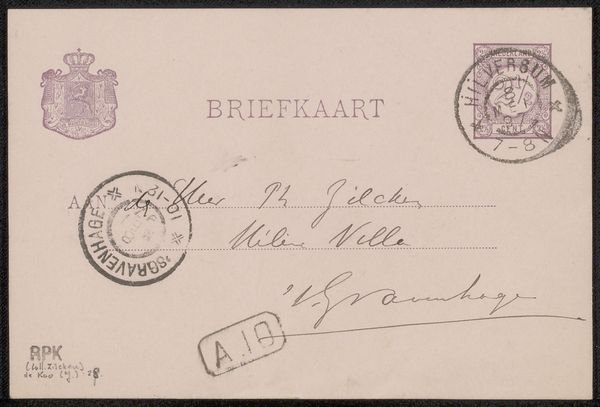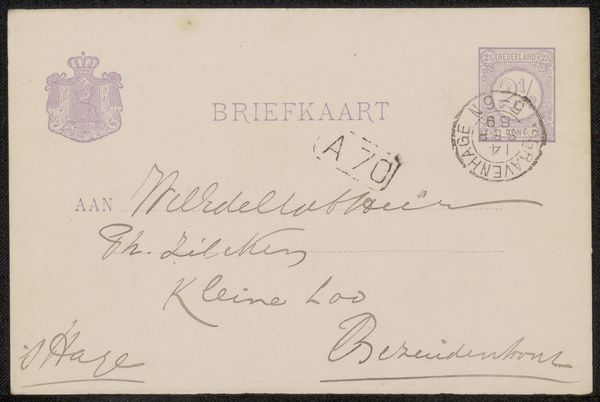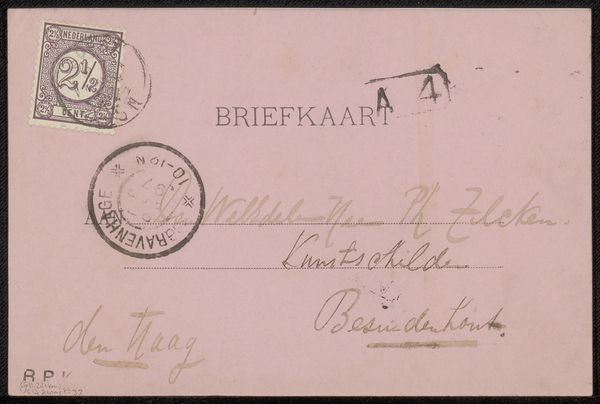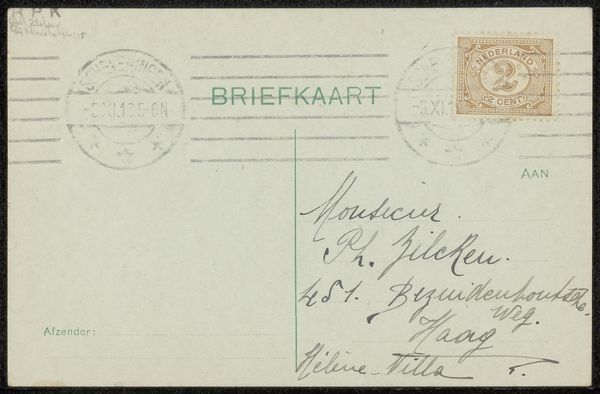
print, photography
#
script typography
#
hand-lettering
# print
#
old engraving style
#
hand drawn type
#
hand lettering
#
photography
#
personal sketchbook
#
hand-drawn typeface
#
ink drawing experimentation
#
pen-ink sketch
#
sketchbook drawing
#
post-impressionism
Copyright: Rijks Museum: Open Domain
Editor: This is "Briefkaart aan Philip Zilcken," a print, possibly photography, by Willem de Zwart, created before 1897. It looks like an old postcard. It’s mostly script typography. I’m intrigued by how everyday objects like this offer a glimpse into the past. What stands out to you about it? Curator: Considering this piece through a historical lens, I see it as more than just a means of communication. It’s a document reflecting the development of postal systems, the rise of literacy, and the very concept of visual communication within late 19th-century Dutch society. Who was Philip Zilcken, and what role did he play within De Zwart’s artistic circle? Editor: I hadn't thought about its wider social context. Finding out more about Zilcken could be a whole new research direction. Does the handwritten element change your view of this object? Curator: Absolutely. The inscription is evidence of the artist’s direct interaction with this object, it bridges the gap between the personal and the public. Also, the postmarks! They offer a wealth of information: date, location, and the mechanics of distribution. I would examine it for clues about its journey, understanding the socio-economic network facilitated by postal services at that time. Think about its circulation, where was it meant to go, and how? Editor: That’s a fascinating perspective. It reframes a simple postcard as a piece of a larger, complex system. I see how studying the seemingly mundane can tell you so much about cultural values and the movement of ideas. Curator: Precisely! By analysing the everyday, we uncover the framework supporting artistic production and reception in a particular period. Editor: I had only thought about the artist's intention when examining the piece, it never occurred to me that I could try tracing its movements to determine who else may have interacted with the card or who might have been interested in the text. Curator: The lifespan of an object is usually much more than that of the artist. Think about this as it moves forward!
Comments
No comments
Be the first to comment and join the conversation on the ultimate creative platform.
